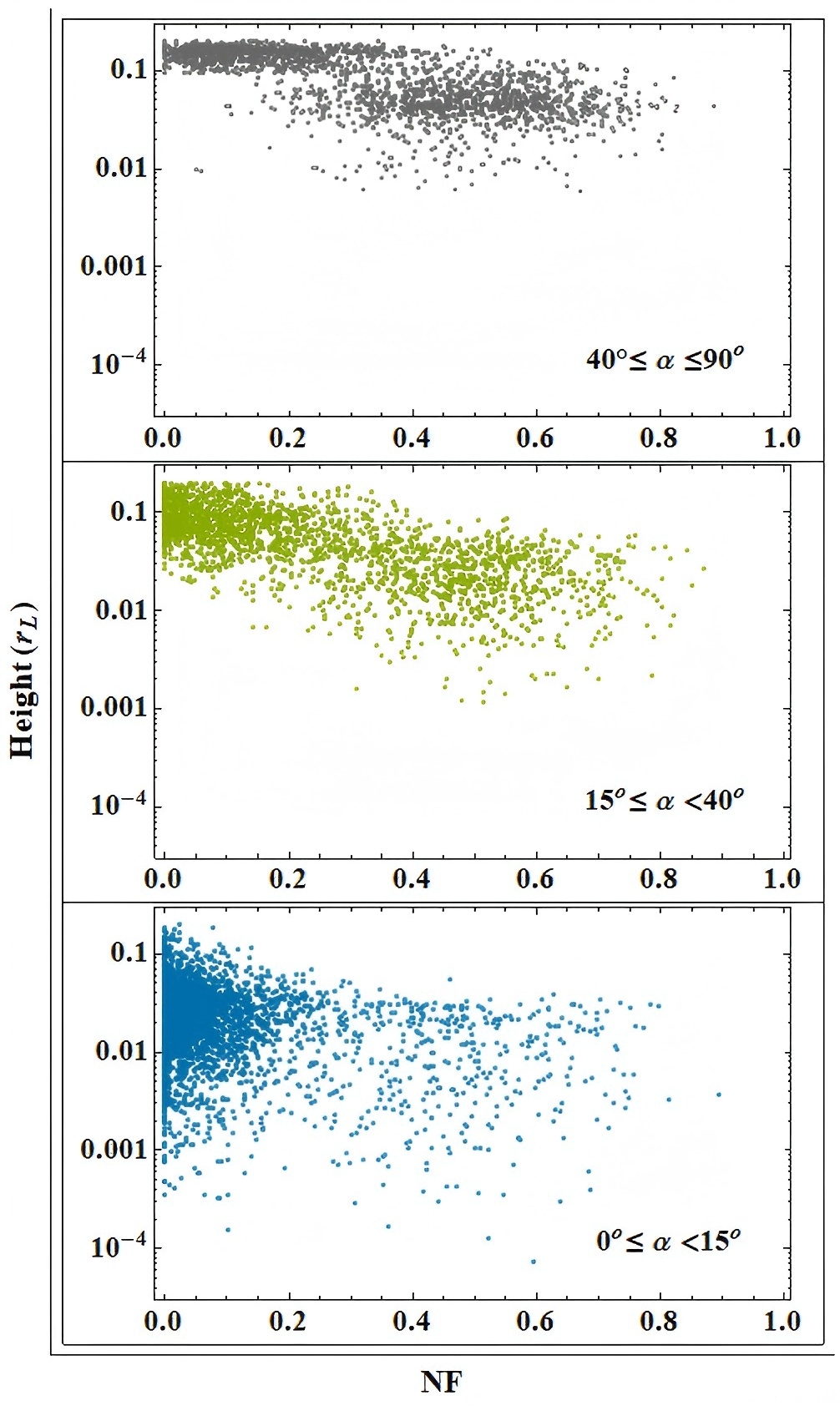
A radio pulsar is like a cosmic lighthouse, a highly dense, rapidly rotating star that emits beams of radio waves. If the Earth happens to be in the path, a "pulse" of radio waves will be detected. Sometimes the pulses just stop, as if the lighthouse beam suddenly turns off for a while. This phenomenon is called pulse nulling and the nulling fraction describes how often it occurs.
Researchers from the Xinjiang Astronomical Observatory (XAO) of the Chinese Academy of Sciences have revealed the link between nulling fraction and emission height by simulating the examination of the correlations between radio pulse nulling fraction, emission height, and their emission geometry, offerring new insight into the inner workings of pulsar magnetospheres.
Using large-scale simulations of 9,000 nulling pulsars, each spanning 1,000 rotations, the researchers found that pulsars with low nulling fractions and large obliquity angles, where the magnetic and rotational axes are more misaligned, tend to emit radio waves from higher heights within their magnetospheres.
In contrast, pulsars with higher nulling fractions and smaller tilt angles emit from lower heights, suggesting that emission geometry fundamentally shapes the stability of pulsar radio signals.
The researchers also found that pulsars sending out radio signals from lower heights display a wide range in how often they go to null. But when the radio waves come from higher up, pulsars tend to emit more consistently.
The results indicate that younger pulsars tend to null at higher emission heights than older pulsars. This suggests weakening of the radio emission mechanism with height as a pulsar ages.

Scatter plots showing the distribution of nulling fraction (NF) as a function of height (rL) for three different ranges of obliquity angles. Each plot is shown on the same log-linear scale. (Image by XAO)

86-10-68597521 (day)
86-10-68597289 (night)

52 Sanlihe Rd., Xicheng District,
Beijing, China (100864)

